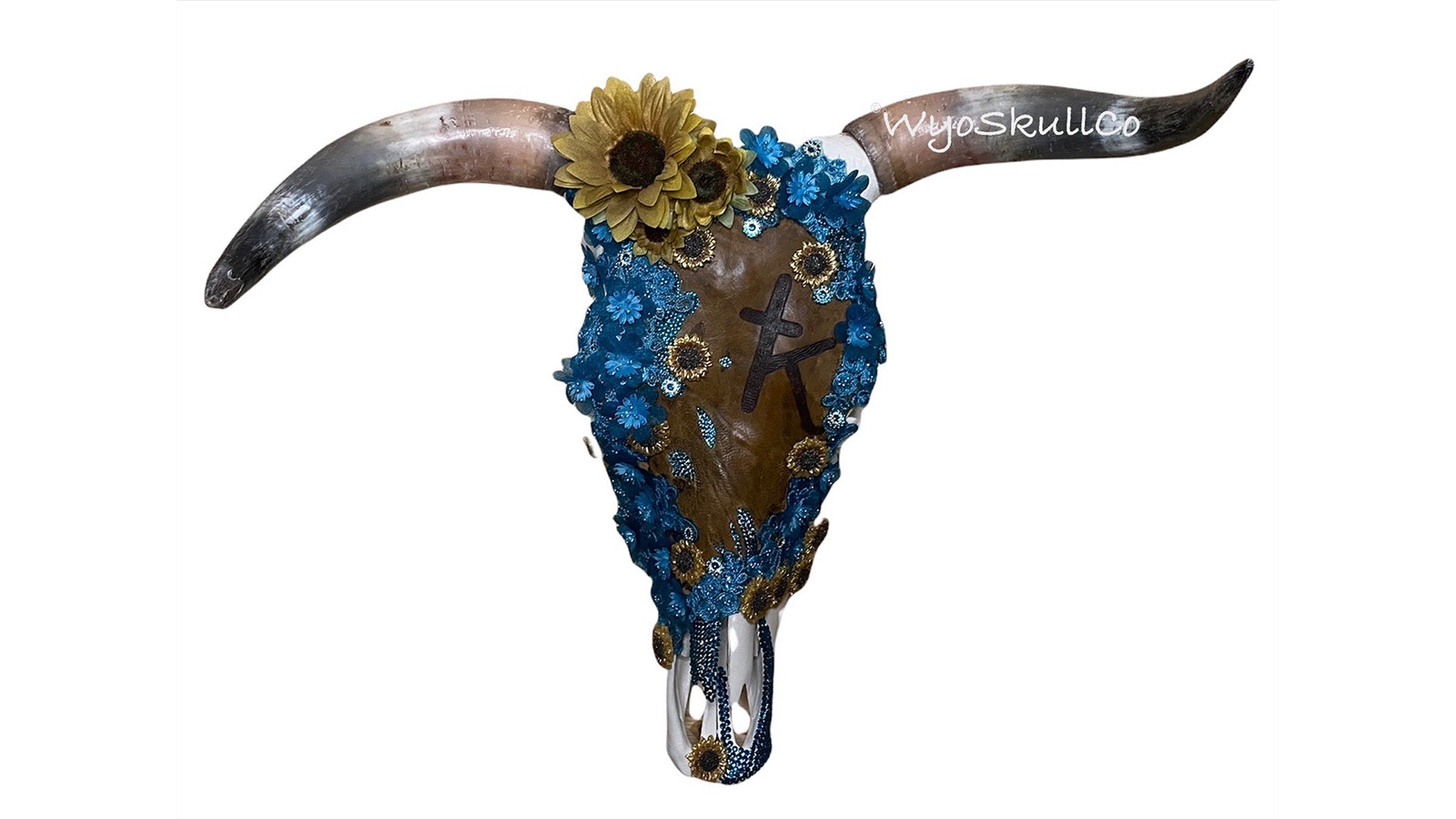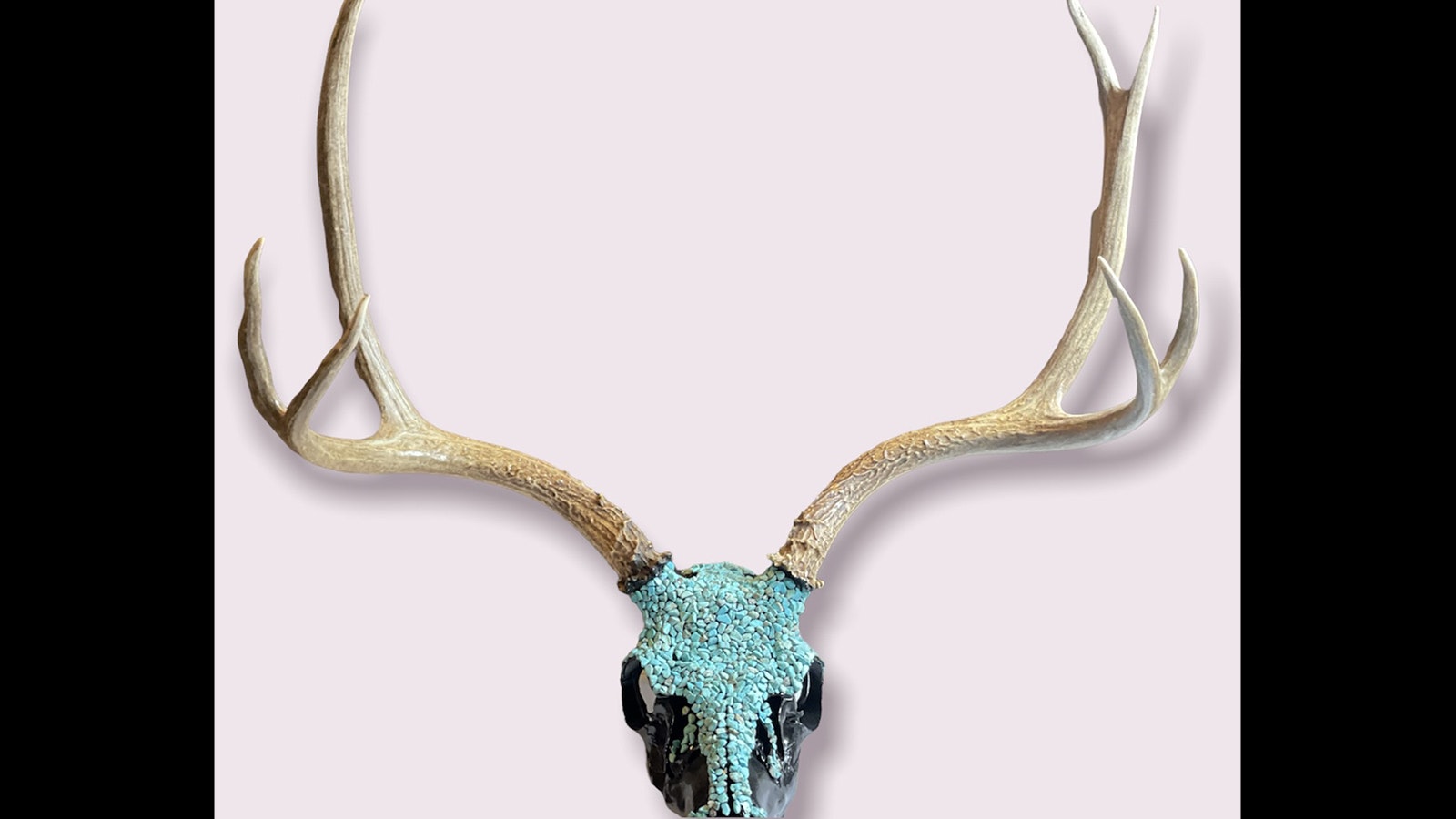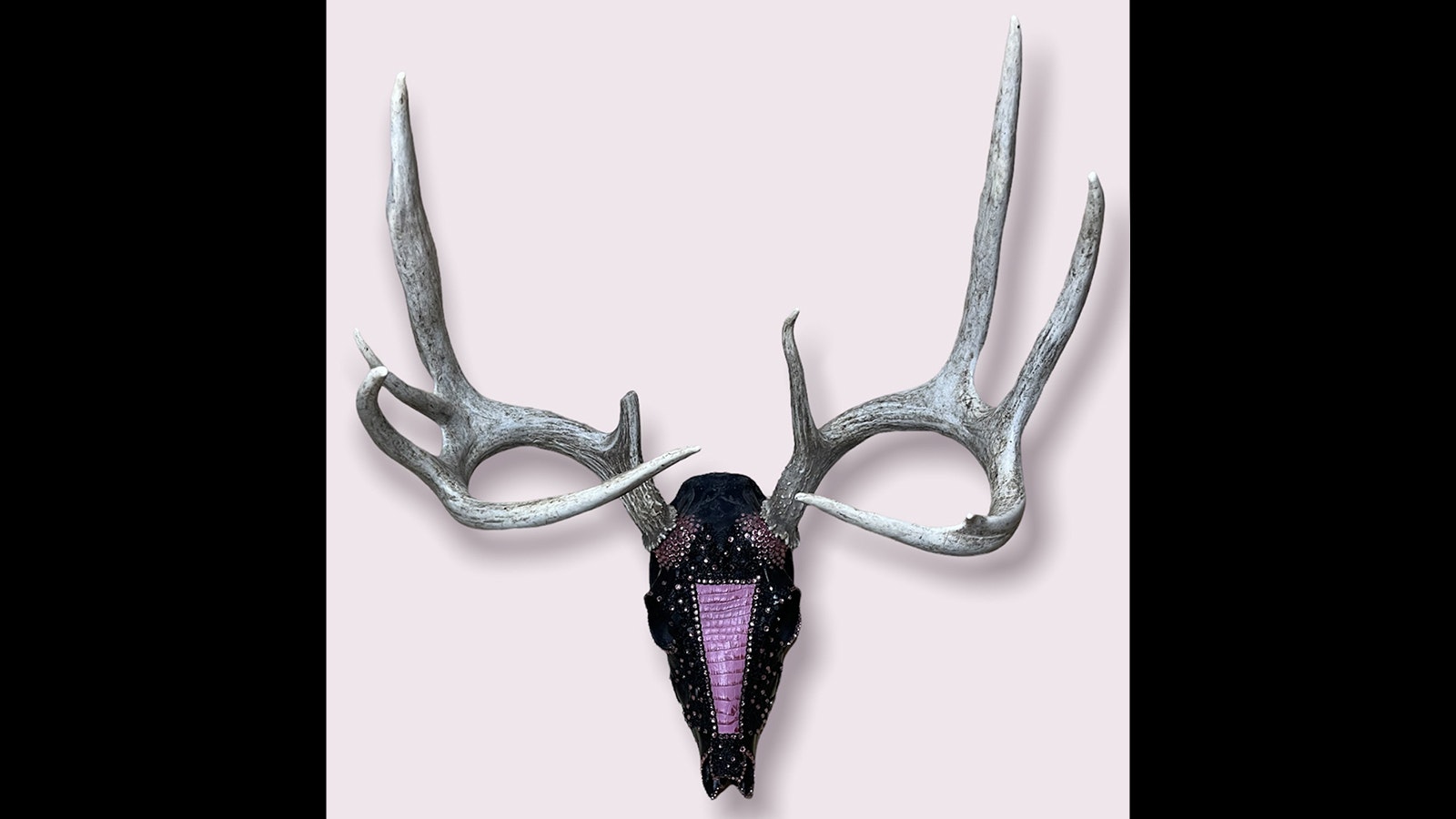Years ago, Sierra Mortimer put some bling and paint on a cattle skull as wedding décor for a relative, and discovered her untapped artistic talent.
“If I were to try to paint or draw pictures of animals or humans, it would look like stick figures,” Mortimer – who lives in rural Converse County near Glenrock – told Cowboy State Daily.
But the cattle skull turned out fantastic, so she started doing others, including skulls from Wyoming big game animals such as elk, deer and antelope.
She’s grown it into a full-time business, Wyo Skull Co.
Mortimer produces “European mounts” as hunting trophies or home décor. European mounts include only an animal’s skull and attached antlers or horns. They can be as simple as only the cleaned, dried and whitened skull. Or they can include all manner of bling, painting, even metal coatings.
Boiling Or Beetles?
When Mortimer gets an animal head from a client, the first step is to remove as much skin and muscle tissue as she can with razor-sharp skinning blades. To clean the skull of any remaining hide or tissue, there are two options. It can be dropped into dirt-filled tank teeming with flesh-eating beetles, or it can be boiled.
Mortimer has so far used boiling, but she’d eventually like to try beetles as well. One advantage of beetles is that they can crawl up inside a skull’s nasal passages and get every last bit of tissue, she said. With boiling, the nasal passages still might have to be cleaned out by hand, and it’s easy to crack or break the delicate nasal bones, Mortimer said.
Either method – beetles or boiling – can, to the uninitiated, stink to high heaven.
“You get acclimated to it, and you don’t notice the smell. Boiling doesn’t smell any worse than the beetles. Honestly, to me, using beetles smells worse,” Mortimer said.
And in her case, her nearest neighbors are about 200 yards away, so they aren’t bothered by the odors wafting from animal heads boiling in a large pot in her yard.

Switching To Big Game
Mortimer said at first, she was happy working with cattle skulls. In fact, her current project is “going full-blown glam” with a longhorn skull one of her clients purchased from a longhorn rancher near Cody, she said.
It will include an American flag design, with “We The People” laser-etched into the forehead.
She said it was her “cow boss” who nudged her toward working with big game skulls. That’s what she calls Mike Cushman, a local rancher she does part-time buckaroo work for.
“He said cattle skulls are a specialized niche business, and I might have better luck expanding into big game European mounts,” Mortimer said.
So, she took his advice, and built up a contact network with hunters and outfitters all over Wyoming. With antelope archery season opening soon, she expects business to be brisk.
Antelope herds in some parts of Wyoming were all but wiped out this year by winterkill and disease outbreaks.
But the herds in the Glenrock area fared much better, she said. The problem for hunters and guides won’t be a lack of antelope, but rather, finding good ambush sites.
“The outfitters are telling me it might take a while to start dropping some antelope, because we have so many good water sources and forage from all the rain this summer,” she said.
A favored tactic for hunting antelope with a bow is to set up near a watering hole. But, when watering holes are abundant and scattered all over the landscape, there’s no telling whether the one a hunter has set up on will be one the critters decide to come to.
Greasy Endeavor
One thing that novice European mount artists fail to take into account is just how greasy skulls can get.
The marrow, as well as residual fat, will turn into grease during the boiling process. If a skull isn’t properly dried and treated afterward, there can be gross consequences.
“If you try to paint over it, the grease will cause the paint to start to sluff off after a while. Or it might start to rot and stink. You don’t want something stinking up your house,” Mortimer said.
Her process involves boiling the skull for several hours and then letting it dry for several days afterward.
To whiten the bones, she uses hydrogen peroxide, not bleach. Bleach can weaken the bones and cause the artwork to chip or crack over time.
The Price Is Right
Mortimer said she tries to keep her prices reasonable – but she doesn’t want to sell herself short either.
For example, she charges $275 to do an elk skull European mount. She said her prices have drawn some criticism in social media comments sections – but she takes it in stride.
Mortimer said she delivers top-quality work that will last and hold its value.
Safety First
The work isn’t without its hazards.
Mortimer said when some rotting fluids from an animal head she was working on got into an open cut on one of her hands, she ended up with a nasty case of blood poisoning. That landed her in the hospital when was still recovering from an earlier surgery for a hip injury.
“I didn’t want to die, and I can’t lose the use of my hip, or my hands,” she said.
She recovered fully and is wiser about sanitary protocols.
She also said skinning road-killed rattlesnake, so that she could use the snakeskin to cover a skull, was unnerving.
“I’ve been in the Wind River mountains, had a grizzly a couple of hundred yards away from me and been, like, ‘meh,’” but the thought of accidentally rupturing one of the rattler’s venom sacks was scary, she said.
Keeping It Legal
Then there are legal concerns.
Like any taxidermist, she must have a state license to practice her craft. And she won’t touch a big game head that doesn’t come with a current valid hunting license and carcass tag from the hunter.
The Wyoming Game and Fish Department requires a hunting license number – as well as a record of when and where the animal was killed by a hunter – for every big game trophy she processes, Mortimer said.
“People might think, ‘Oh, this is simple, you’re just dropping a head in a boiling pot of water, well whoopie-do’. They don’t realize we have to take the time to make sure that we’re doing everything right, and we’re doing everything legally so that we don’t get into trouble,” she said.
As a single parent with a blooming business, Mortimer is finding a new rhythm in her life.
“I figure this will take up about half of my year. For the other half, I’ve got to figure out whether I’m going to go cowboy, or if I’m just going to hang out with my kiddo,” she said.

Mark Heinz can be reached at mark@cowboystatedaily.com.











